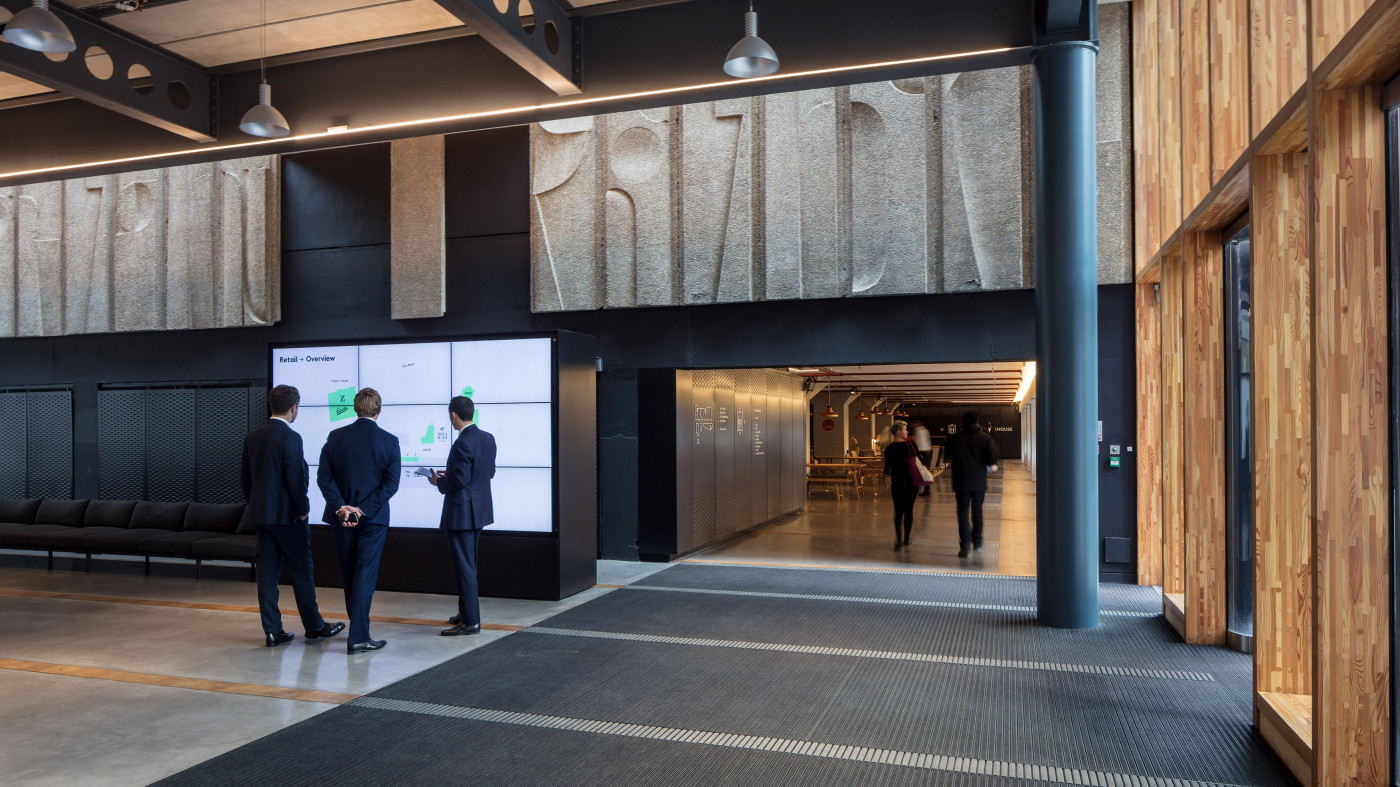Also, companies have since realised that if they want to retain and attract the best talent in the marketplace, they need to prioritise employees. As a result, decisions relating to office layout, design, and wayfinding are now primarily influenced by Human Resources and Facilities departments.
As more people seek to redress their work-life balance, businesses are constantly reviewing how they do things. Here are five key areas they’re focusing on now, to ensure they keep pace with what employees want and what their businesses need.
In recent years, technological and economic factors have decreased demand for traditional, long-term office leases. Nowhere is this more evident than in London. Since 2012, the take-up of flexible office space in London has rocketed and shows no sign of slowing down.
In addition to this, as more and more employees use laptops as their primary work tool, hot-desking is a reality. In fact, there’s speculation that two-thirds of multinational companies will implement shared-desk workplaces by 2020.
However, initiatives like these aren’t merely space saving and cost cuttings exercises. Offering staff more flexible-benefits and the chance to work remotely has been shown to improve productivity and reduce the number of sick days.
Conventional offices spaces aren’t usually the most inspiring places to spend time. But functionality no longer trumps innovation! Long gone are the days where a desk, chair, and PC sufficed; business-owners are now aware that more inspiring workplaces (think: Google, Facebook, YouTube) don’t just increase productivity: they foster creativity too. Plus, they’re quite frankly, far more fun to work in.
But what constitutes a creative space (see our article on our office renovation for an insight)? Sure, give some employees carte blanche and you would get a stack of frivolous and expensive responses. We would all like a pool table/games room/massage chair in our workplace, but aren’t these just distractions?
A creative space is one that encourages collaboration; one where there are fewer barriers, more opportunities to interact with different departments, and share ideas. A space like this can simply be a dedicated open studio area where there are lots of natural light and some decent chairs and/or beanbags. But really, it’s as much about adopting an open company culture as it is creating a specific space.
Space is at a premium in many major cities, so the office clutter of yesteryear is on the way out; something that’ll naturally peter out as more information is stored online, and fewer people have permanent desks. A move towards minimalism seems to be creeping in stylistically too. Clean cut furnishings and flashes of colour remain popular. But minimalism doesn’t just mean ‘stark’ and ‘functional’; it’s also about giving people more space and using that space to best effect.
Creating space where there’s an inherent lack of it is an art in itself. An abundance of tall buildings in the urban environment has led some businesses to use their roof space more effectively. Last year I saw plenty of roof terraces at places like the Helical Bars and The Bower. Derwent London’s White Collar Factory even has its own roof terrace running track – and offers some fantastic views.
Health and Wellbeing
With the increased awareness of mental wellness and burnout, more offices are being designed to focus on employee wellbeing. As office work becomes more technology-focused and therefore sedentary, employers are encouraging staff to partake in more physical activity.
But it’s not all bike-sharing schemes and gym memberships; what about the office buildings themselves, more specifically, the long winding staircases that only ever frequented when the lift is out of order? Wayfinding has a role to play here too: see our article on Twentytwo Bishopsgate for more on this particular trend.
While there’s definitely some way to go before robots take over from human employees, there’s no denying that automation, Artificial Intelligence (AI), Virtual Reality, and 3D printing are poised to make a big impact on our working lives.
For example, tech giant, Cisco is pioneering an AI video conferencing tool that reframes the camera to optimise each participant’s viewpoint and filters out background noise. VR and 3D printing are being used more frequently in the design, architecture, engineering, and real estate sectors; to produce everything from full-scale CAD models and physical prototypes. In fact, the world’s first 3D-printed office in Dubai took 17 days to build and cost £110,000. Experts think that 75% of businesses will be using 3D printing by 2020.
So, will we start seeing more offices incorporating these new technologies as standard? Will AI even start designing our offices for us? Perhaps wayfinding solutions in each office building will become personalised to each individual person? Right now, anything seems possible… but even as technology becomes smarter, the focus I’m almost certain will be on giving human employees what they need to have a creative and productive working day.
Ultimately, the way forward for businesses is to look after their employees, nurture their growth, and encourage them to succeed, in order to retain them. Designing a workplace that fits the bill really just means creating an environment where they’d want to spend more time. It’s as simple and as complicated as that.
